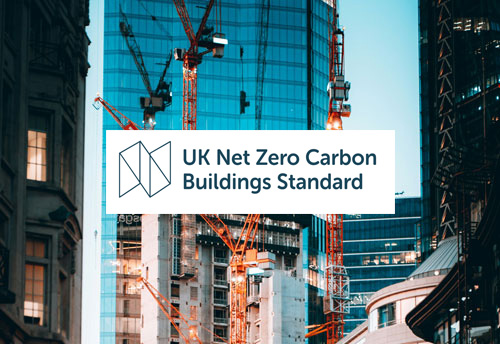Lighting retrofits to be covered by new UK building standard

The replacement of lighting systems including associated fittings and electrics is set to become a separate ‘reportable works’ under the new UK Net Zero Carbon Buildings Standard.
This means that a lighting-only retrofit project falls within the scope of the new standard and can be assessed against it.
The pilot version of the innovative cross-industry standard for net zero carbon aligned buildings was compiled by a consortium of organisations including the BRE, the Carbon Trust, CIBSE, SLL, IStructE, LETI, RIBA, RICS, and UKGBC.
The UK Net Zero Carbon Buildings Standard is a free-to-access technical standard that will enable the built environment to robustly prove that built assets align with the UK’s carbon and energy budgets.
Until this point, there has been no single, agreed methodology for defining what ‘net zero carbon’ means for buildings in the UK.
Consequently, the authors say that the area ‘has been rife with spurious claims’ around the topic.
The standard, they say, provides a set of consistent rules to create a level playing field around such claims.
The standard is aimed at anyone who wants to fund, procure, design, or specify a net zero carbon building, and for anyone who wishes to definitively demonstrate that their building is net zero carbon aligned.
As a robust industry-backed initiative, the standard should be useful to policymakers as it outlines what is needed to support the UK’s net zero carbon transition.
It has been developed and agreed through collaboration between built environment organisations and industry leaders spanning architects, engineers, carbon assessors, developers, and more.
Over 350 experts from across the industry have supported the Technical Steering Group during the standard’s development phase.
Wider stakeholder engagement and feedback through roundtables up and down the country, as well as through public consultation, captured the views of over 700 individuals.
The standard’s mandatory requirements for building performance and construction quality are ‘ambitious but achievable’, say the authors. They cover a range of topics such as upfront carbon, operational energy use, avoidance of fossil fuel use on site, renewables and refrigerants.
The pilot version contains the technical details on how a building should meet the standard, including what limits and targets it needs to meet, the technical evidence needed to demonstrate this, and how it should be reported. Details on the subsequent verification process will be published separately.
The built environment industry is encouraged to use the pilot version to prepare for the process of verifying buildings as net zero carbon aligned.
Katie Clemence-Jackson, chair of the standard’s technical steering group, told the Circular Lighting Report: ‘The standard has been created not just using industry data on what is achievable, but also cross referencing this with ‘top down’ modelling of what is needed to decarbonise our industry in line with 1.5°C aligned carbon and energy budgets. It covers all the major building sectors, as well as both new and existing buildings.
‘With access to the Standard, the built environment industry is equipped to target, design and operate buildings to be net zero carbon aligned, driving the positive change that we need to meet our climate goals.
‘I would like to thank all our volunteers from across the built environment who have contributed their time, experience and knowledge to allow us to develop a robust Standard. This has been an immensely collaborative process, and we couldn’t have achieved it without your support.”
David Partridge, Chair of the Standard’s Governance Board, said: ‘The standard brings together data from thousands of buildings submitted by professionals from across the built environment and will be an important step towards a net zero carbon economy.
‘I encourage everyone within the built environment and real estate sector, from investors, funds and lenders, through developers to building designers, managers and contractors, to start to use the pilot version of the standard. We will shortly be launching a pilot testing programme to glean feedback on applying the process on real projects.’
• Download the UK Net Zero Carbon Buildings Standard HERE.
• Diary date: Circular Lighting Live 2024, Recolight’s flagship conference and exhibition, which takes place on Wednesday 9 October 2024 at the Royal College of Physicians in London. Free to specifiers, Circular Lighting Live 2024 will feature leading experts, specifiers and policy makers who will share their insights into forthcoming standards and legislation, emerging technologies and new business models. More info: www.circularlighting.live
• Pic: Szymon Shields/Unsplash 2023


